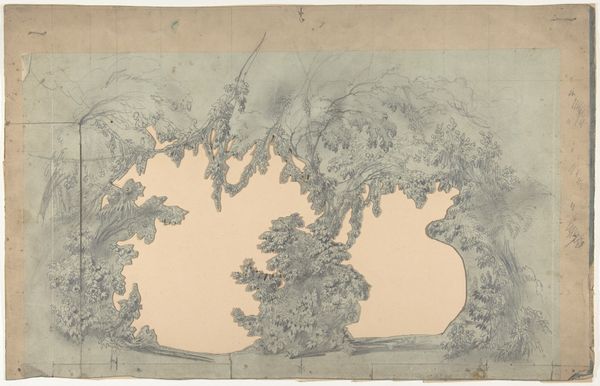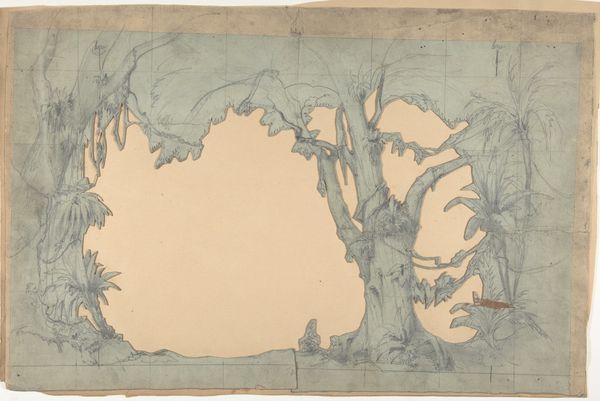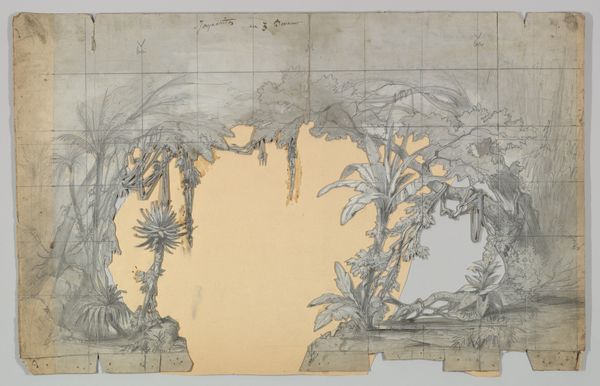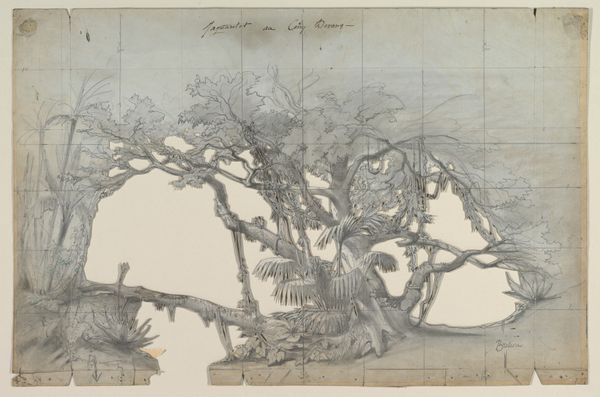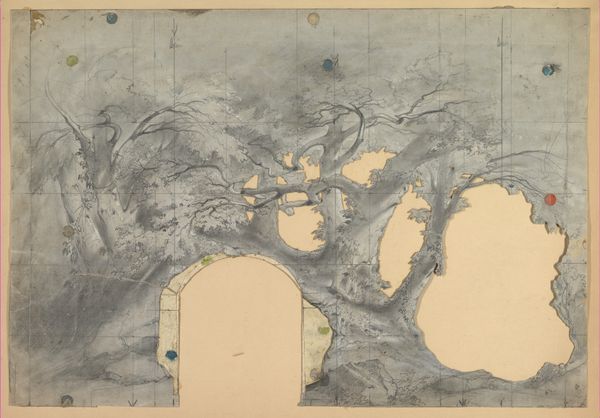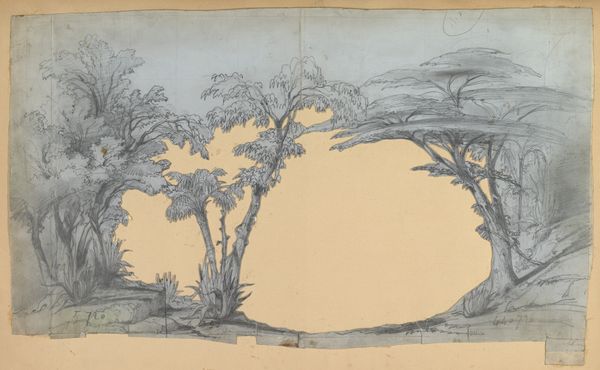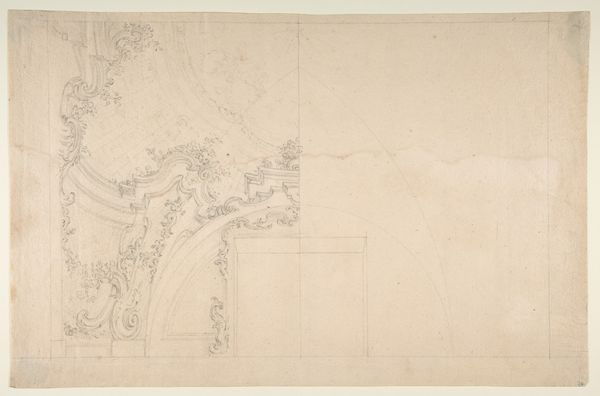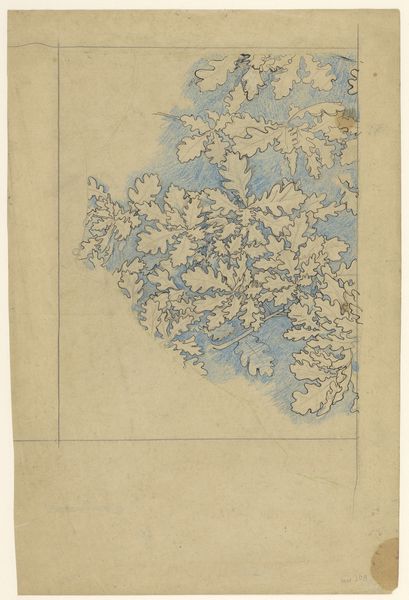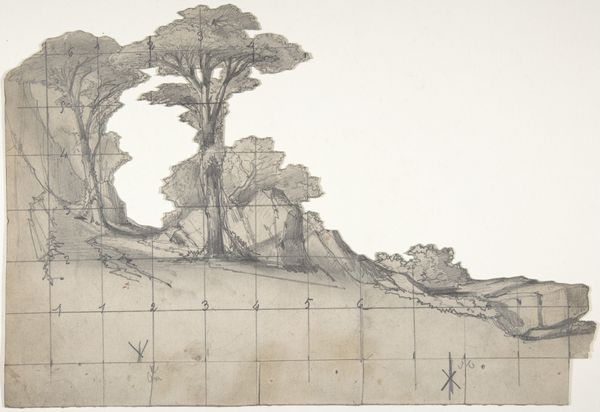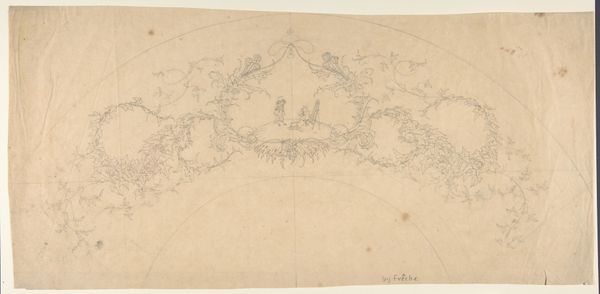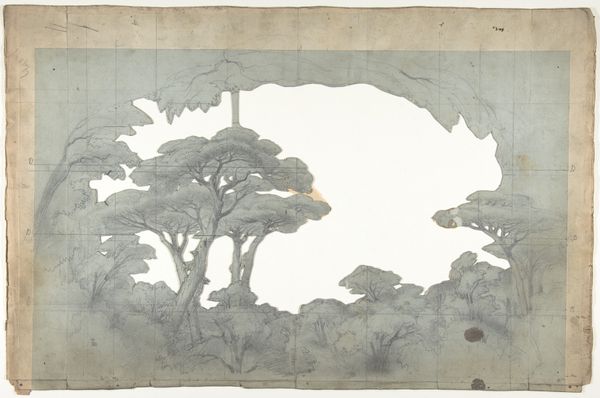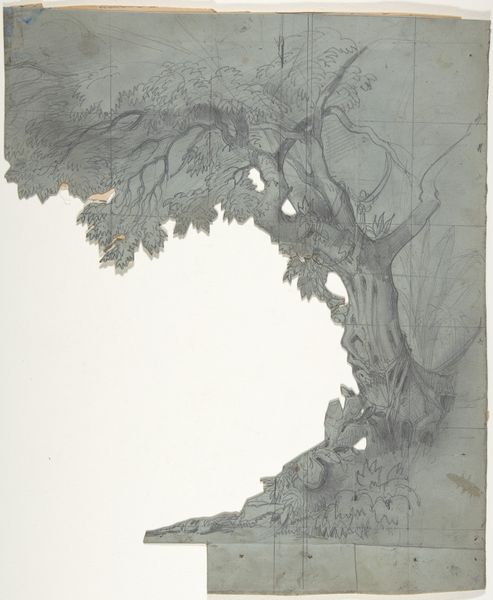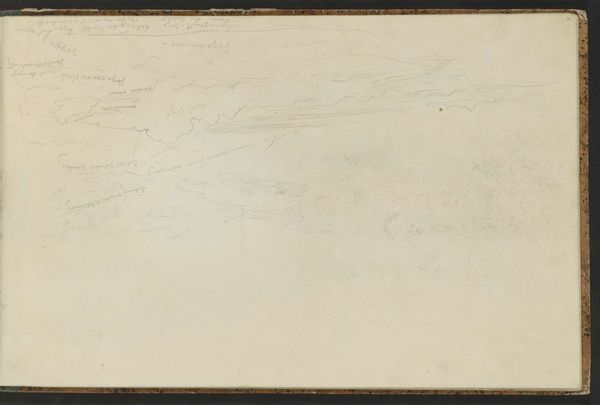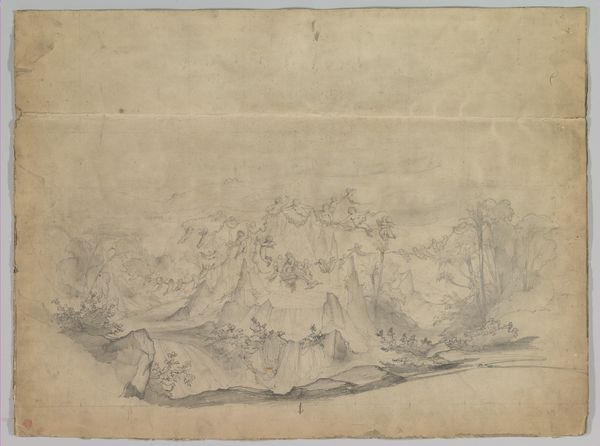
Copyright: Public Domain
Eugène Cicéri made this stage set design with graphite, possibly in France during the mid-19th century. At this time, theater was a key public institution for shaping social values and this drawing offers us a glimpse into the mechanics of that process. The landscape includes an old tree on the left and a rugged rock face on the right. Note the grid marks overlaid on the design, the artist's inscription at the bottom, and other notations. These suggest the design was part of a carefully managed process within the theater. It would have been circulated for feedback, refined, and then used for the actual set construction. The imagery evokes the idea of nature, but one which is clearly staged and controlled. It is thus highly artificial. This tension between nature and artifice, freedom and control, was central to the cultural life of 19th-century France. Research into theater archives, set design manuals, and social histories of Parisian audiences can tell us more about the artwork’s meaning as a cultural artifact.
Comments
No comments
Be the first to comment and join the conversation on the ultimate creative platform.
